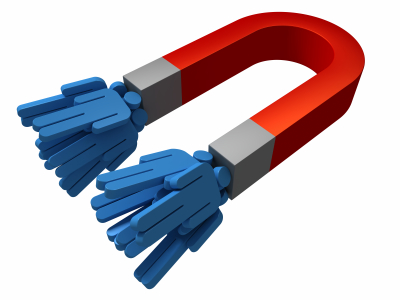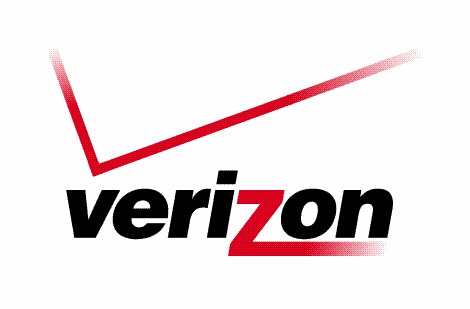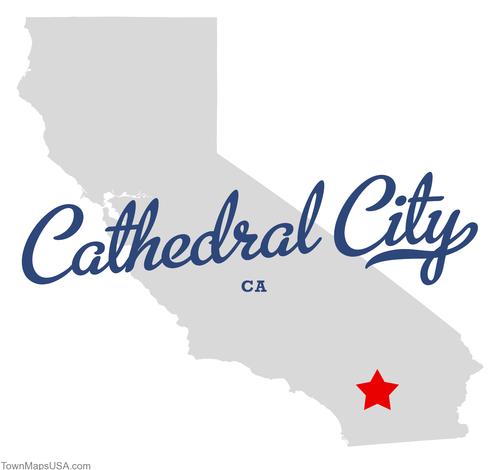In April I continued my attack on the skies (and airports) of America, bouncing around the country on a variety of projects for a variety of clients. I crossed the country from California to New York working in all three of my areas, presentation, education and consultation. My activity was a great example of what keeps my job so interesting: I did 12 completely different projects for 12 different clients in eight different industries. WOW, that really keeps you on your toes! Here are a few highlights:
 Continued the rollout of Repeatable Successful Acts for four clients. The impact of this idea, that the repeated sales patterns of million dollar producers can be successfully applied to any sales professional and any existing sales process, continues to grow.
Continued the rollout of Repeatable Successful Acts for four clients. The impact of this idea, that the repeated sales patterns of million dollar producers can be successfully applied to any sales professional and any existing sales process, continues to grow.- Helped design, build and facilitate a unique strategic planning retreat that involved CEOs from my client's top customers. The idea is that if you want to know how you're doing, how your new ideas will impact your customers, and what the appetite is for products, ask your top customers! The two-day retreat around this critical concept was a huge success, with honest, critical, and supportive ideas generated by the very people who use and buy the products and services.
- The Opportunity of Meeting: I spend my life in meetings and am constantly amazed by the incredible opportunity that is wasted in these gatherings because the client doesn't see the value sitting right before their eyes. I decided to create a comprehensive strategic platform (an idea that can be in presentation mode, educational curriculum and consultation) around a new way to see and structure the value found in EVERY meeting. April gave me the first opportunity to launch The Opportunity of Meeting for a client (see article below).
 Transformation vs. Innovation: I am working on a year-long program for a client around the idea that advances are made more from changing something that exists (transformation) than creating something new from scratch (innovation).
Transformation vs. Innovation: I am working on a year-long program for a client around the idea that advances are made more from changing something that exists (transformation) than creating something new from scratch (innovation).
 Thought you might find my latest discussion on simplicity interesting. Just click on the Windows Media Player icon on the right.
Thought you might find my latest discussion on simplicity interesting. Just click on the Windows Media Player icon on the right.
Drop me a note and let me know how things are with you.
"Meetings are indispensable when you don't want to do anything."-- John Kenneth Galbraith
I spend my life in meetings, all kinds of meetings: planning, strategic, educational, sales, informative... you name it. If there were 31 flavors of meetings, I would have tasted them all. In this morass of business get-togethers, I have seen fantastically well-planned meetings, and I have seen Titanic-like meetings without a single thought given to the desired outcome. I have watched brilliant strategies being launched and creative ideas come into being. At the same time I have seen potential wasted at a level that would boggle your mind. How can there be such a wide range of impact when it comes to meetings? I hate to say it, but the cause is ignorance. People just plain don't have any idea that a meeting can be anything other than a beating, a condemnation of time spent in myriad hours of useless impact. Guess what? They're WRONG.
Think, just for a minute. Where can you find, in one place, a group of impactful people with yet untapped potential? How about a meeting? Usually, gathered in a single moment of time and space are the people who can impact whatever it is they are assembled to discuss. Wouldn't it be nice to walk out of such a gathering and say, "WOW, I can't wait to get started!" Ahh, if only it were that easy. If only the idea of a meeting could be structured that way. Well, it can, but first a lot has to change.
 The Opportunity of Meeting is a strategic, emotional attack on the idea of meeting, with a nice dash of personal accountability thrown in for good measure. Here is a very brief idea of what a movement to throw out the old pre-determined mind set about meetings would look like. It has (you probably guessed it) only three parts, but three parts that require deep effort. Keep in mind... this is all about the opportunity that exists when you have the right people in the right place to impact outcome. It's WORTH the effort.
The Opportunity of Meeting is a strategic, emotional attack on the idea of meeting, with a nice dash of personal accountability thrown in for good measure. Here is a very brief idea of what a movement to throw out the old pre-determined mind set about meetings would look like. It has (you probably guessed it) only three parts, but three parts that require deep effort. Keep in mind... this is all about the opportunity that exists when you have the right people in the right place to impact outcome. It's WORTH the effort.
 First, you have to battle... and I mean FIGHT... against historical experience and expectations. When you see a meeting coming up, you tend to retreat into "history" mode. You begin a painful trip into a past filled with the despair of minutes moving like molasses on a winter's day. You expect to see Dante's sign that hung over Hell: "Abandon all hope, ye who enter here." This is the first problem, fighting history, so you have to consciously focus on a strategy that sets the stage differently, that obliterates that historical perspective.
First, you have to battle... and I mean FIGHT... against historical experience and expectations. When you see a meeting coming up, you tend to retreat into "history" mode. You begin a painful trip into a past filled with the despair of minutes moving like molasses on a winter's day. You expect to see Dante's sign that hung over Hell: "Abandon all hope, ye who enter here." This is the first problem, fighting history, so you have to consciously focus on a strategy that sets the stage differently, that obliterates that historical perspective.
 PRE: What is done ahead of the meeting? You should be thinking about the space and time that exist BEFORE the meeting. This is a critical part of an impactful and opportunistic get-together. The idea is to create ANTICIPATION. What would make someone WANT to come to the meeting? What can you do to connect participation to a desired outcome? This is a strategic approach to gaining the momentum that makes ANY meeting worth holding. This is the first step in creating a sense of theme and continuity that moves through the meeting. And when you count the person-hours involved in any meeting, it is not unreasonable to invest some thought and effort in advance. I don't care if it's the weekly staff meeting or the national sales meeting. I don't care if it involves the maintenance personnel or your top customers. ALL meetings have the opportunity and potential for impact. Think of creating a simple spark for the meeting. It might be a new tight agenda that respects the time of each participant. It might be a simple homework assignment that gets them thinking ahead of the meeting. It could be an article they should read or a video they should watch or a podcast they should listen to. It is about creating a "beginning."
PRE: What is done ahead of the meeting? You should be thinking about the space and time that exist BEFORE the meeting. This is a critical part of an impactful and opportunistic get-together. The idea is to create ANTICIPATION. What would make someone WANT to come to the meeting? What can you do to connect participation to a desired outcome? This is a strategic approach to gaining the momentum that makes ANY meeting worth holding. This is the first step in creating a sense of theme and continuity that moves through the meeting. And when you count the person-hours involved in any meeting, it is not unreasonable to invest some thought and effort in advance. I don't care if it's the weekly staff meeting or the national sales meeting. I don't care if it involves the maintenance personnel or your top customers. ALL meetings have the opportunity and potential for impact. Think of creating a simple spark for the meeting. It might be a new tight agenda that respects the time of each participant. It might be a simple homework assignment that gets them thinking ahead of the meeting. It could be an article they should read or a video they should watch or a podcast they should listen to. It is about creating a "beginning."
MEETING:This is the event itself. Let's look at the basics. First, there is content and delivery. Is the content in line with your Pre-Meeting strategy? Does your plan connect what you want to say with what the audience wants to hear? A content plan makes sure there are no gaps between presentation and expectations. Next, what about the delivery of the content? Does the delivery engage the audience, challenge the way they think? Does it stress visuals over an unsupported (and always boring) lecture style? Does it create desire, the want to know what's next?
With regard to your core responsibilities, next make sure the basics are met. Arrive early, check the room for set up, temperature, visual lines to the front of the room. Do the pens at the flipchart work? Greet everyone. Have a strong opening with introductions. Have a strong closing with a call to action.
The meeting, the event, is the heart of this impact strategy. Is it treated as a true event?
 POST: Now the meeting is done. You did a great job of planning for the pre and event, but you're not done. You think that after all that work, you can just relax and bask in the success of a wonderful experience? Hold on, no rest just yet. Think about all the energy you just created, all the good will, all the new knowledge you imparted to the audience, your future clients. You need to capture it. You can't let all that energy vanish. You need a post-event strategy. Here is one idea:
POST: Now the meeting is done. You did a great job of planning for the pre and event, but you're not done. You think that after all that work, you can just relax and bask in the success of a wonderful experience? Hold on, no rest just yet. Think about all the energy you just created, all the good will, all the new knowledge you imparted to the audience, your future clients. You need to capture it. You can't let all that energy vanish. You need a post-event strategy. Here is one idea:
- Create three follow-up marketing style pieces. Maybe they are HTML sheets with a sampling of the same graphics you used at the meeting. To try a rich media idea, you can record three summary podcasts or shoot three simple "raw" videos using a flip recorder.
- Each piece contains core content information that was delivered at the meeting. These are structured so that they reconnect to the meeting experience.
- Now use the "drip" strategy and send out one piece each week for three weeks after the meeting/event for reinforcement.
- The third piece should contain a call to action. If the audience was existing or potential clients, the third piece should be the foundation setting up a face to face meeting.
Meetings should not be the "black holes" of your time. When approached with a conscious strategy, meetings are the springboard of opportunity. Imagine you are a Tupperware salesperson and the room is filled with people whose refrigerators are filled with rotting food. How hard would it be to turn that meeting into a sales bonanza? It just takes a small amount of effort to rewrite your meeting history.
 Gorging at the Data Trough: Seems our insatiable appetite for data with our smart phones and tablets is causing a problem. The dwindling electromagnetic spectrum available to wireless carriers is causing a rash of dropped calls and poor reception. A possible solution is to go to the TV broadcasters and say, "Hey, how about a little help?" TV broadcasters could sell a piece of their spectrum pie. If they sold only 120 megahertz of their spectrum, it would create a staggering 22% more space for our rapidly increasing mobile need and create a new revenue stream for the TV guys.
Gorging at the Data Trough: Seems our insatiable appetite for data with our smart phones and tablets is causing a problem. The dwindling electromagnetic spectrum available to wireless carriers is causing a rash of dropped calls and poor reception. A possible solution is to go to the TV broadcasters and say, "Hey, how about a little help?" TV broadcasters could sell a piece of their spectrum pie. If they sold only 120 megahertz of their spectrum, it would create a staggering 22% more space for our rapidly increasing mobile need and create a new revenue stream for the TV guys. iPhone Avalanche: Here is a quick note on the continued impact of the iPhone. Now in the iPhone game, Verizon, sold 2.2 million iPhones in the first quarter, helping to generate a $3.26 billion profit and adding almost a million new customers.
iPhone Avalanche: Here is a quick note on the continued impact of the iPhone. Now in the iPhone game, Verizon, sold 2.2 million iPhones in the first quarter, helping to generate a $3.26 billion profit and adding almost a million new customers. A City is a Product: Cathedral City, a California desert community, has decided to create itself as a brand. They have narrowed a large search of marketing/advertising agencies down to three in an effort to create an identity. Desiring to attract developers, businesses, and new residents, city officials think this is a great use of effort and resources: "We want Cathedral City to be ‘top of mind.' We want to be more tangible, and to make that happen we have to have a tangible identity." The search and creation of identity is a part of all successful organizations. What is your identify? Do all your people know it?
A City is a Product: Cathedral City, a California desert community, has decided to create itself as a brand. They have narrowed a large search of marketing/advertising agencies down to three in an effort to create an identity. Desiring to attract developers, businesses, and new residents, city officials think this is a great use of effort and resources: "We want Cathedral City to be ‘top of mind.' We want to be more tangible, and to make that happen we have to have a tangible identity." The search and creation of identity is a part of all successful organizations. What is your identify? Do all your people know it?
Interested in these ideas?
FOLLOW STEVE ON TWITTER.COM — CREATIVEVENTURE
FOLLOW STEVE ON FACEBOOK.COM — STEPHEN HARVILL
You can contact Steve at steve@creativeventures.com or give him a call at 972-490-7717.
See more at creativeventures.com and stephenharvill.com
 Continued the rollout of Repeatable Successful Acts for four clients. The impact of this idea, that the repeated sales patterns of million dollar producers can be successfully applied to any sales professional and any existing sales process, continues to grow.
Continued the rollout of Repeatable Successful Acts for four clients. The impact of this idea, that the repeated sales patterns of million dollar producers can be successfully applied to any sales professional and any existing sales process, continues to grow. Transformation vs. Innovation: I am working on a year-long program for a client around the idea that advances are made more from changing something that exists (transformation) than creating something new from scratch (innovation).
Transformation vs. Innovation: I am working on a year-long program for a client around the idea that advances are made more from changing something that exists (transformation) than creating something new from scratch (innovation). Thought you might find my latest discussion on simplicity interesting. Just click on the Windows Media Player icon on the right.
Thought you might find my latest discussion on simplicity interesting. Just click on the Windows Media Player icon on the right.


 The Opportunity of Meeting is a strategic, emotional attack on the idea of meeting, with a nice dash of personal accountability thrown in for good measure. Here is a very brief idea of what a movement to throw out the old pre-determined mind set about meetings would look like. It has (you probably guessed it) only three parts, but three parts that require deep effort. Keep in mind... this is all about the opportunity that exists when you have the right people in the right place to impact outcome. It's WORTH the effort.
The Opportunity of Meeting is a strategic, emotional attack on the idea of meeting, with a nice dash of personal accountability thrown in for good measure. Here is a very brief idea of what a movement to throw out the old pre-determined mind set about meetings would look like. It has (you probably guessed it) only three parts, but three parts that require deep effort. Keep in mind... this is all about the opportunity that exists when you have the right people in the right place to impact outcome. It's WORTH the effort. First, you have to battle... and I mean FIGHT... against historical experience and expectations. When you see a meeting coming up, you tend to retreat into "history" mode. You begin a painful trip into a past filled with the despair of minutes moving like molasses on a winter's day. You expect to see Dante's sign that hung over Hell: "Abandon all hope, ye who enter here." This is the first problem, fighting history, so you have to consciously focus on a strategy that sets the stage differently, that obliterates that historical perspective.
First, you have to battle... and I mean FIGHT... against historical experience and expectations. When you see a meeting coming up, you tend to retreat into "history" mode. You begin a painful trip into a past filled with the despair of minutes moving like molasses on a winter's day. You expect to see Dante's sign that hung over Hell: "Abandon all hope, ye who enter here." This is the first problem, fighting history, so you have to consciously focus on a strategy that sets the stage differently, that obliterates that historical perspective. PRE: What is done ahead of the meeting? You should be thinking about the space and time that exist BEFORE the meeting. This is a critical part of an impactful and opportunistic get-together. The idea is to create ANTICIPATION. What would make someone WANT to come to the meeting? What can you do to connect participation to a desired outcome? This is a strategic approach to gaining the momentum that makes ANY meeting worth holding. This is the first step in creating a sense of theme and continuity that moves through the meeting. And when you count the person-hours involved in any meeting, it is not unreasonable to invest some thought and effort in advance. I don't care if it's the weekly staff meeting or the national sales meeting. I don't care if it involves the maintenance personnel or your top customers. ALL meetings have the opportunity and potential for impact. Think of creating a simple spark for the meeting. It might be a new tight agenda that respects the time of each participant. It might be a simple homework assignment that gets them thinking ahead of the meeting. It could be an article they should read or a video they should watch or a podcast they should listen to. It is about creating a "beginning."
PRE: What is done ahead of the meeting? You should be thinking about the space and time that exist BEFORE the meeting. This is a critical part of an impactful and opportunistic get-together. The idea is to create ANTICIPATION. What would make someone WANT to come to the meeting? What can you do to connect participation to a desired outcome? This is a strategic approach to gaining the momentum that makes ANY meeting worth holding. This is the first step in creating a sense of theme and continuity that moves through the meeting. And when you count the person-hours involved in any meeting, it is not unreasonable to invest some thought and effort in advance. I don't care if it's the weekly staff meeting or the national sales meeting. I don't care if it involves the maintenance personnel or your top customers. ALL meetings have the opportunity and potential for impact. Think of creating a simple spark for the meeting. It might be a new tight agenda that respects the time of each participant. It might be a simple homework assignment that gets them thinking ahead of the meeting. It could be an article they should read or a video they should watch or a podcast they should listen to. It is about creating a "beginning." POST: Now the meeting is done. You did a great job of planning for the pre and event, but you're not done. You think that after all that work, you can just relax and bask in the success of a wonderful experience? Hold on, no rest just yet. Think about all the energy you just created, all the good will, all the new knowledge you imparted to the audience, your future clients. You need to capture it. You can't let all that energy vanish. You need a post-event strategy. Here is one idea:
POST: Now the meeting is done. You did a great job of planning for the pre and event, but you're not done. You think that after all that work, you can just relax and bask in the success of a wonderful experience? Hold on, no rest just yet. Think about all the energy you just created, all the good will, all the new knowledge you imparted to the audience, your future clients. You need to capture it. You can't let all that energy vanish. You need a post-event strategy. Here is one idea:
 Gorging at the Data Trough: Seems our insatiable appetite for data with our smart phones and tablets is causing a problem. The dwindling electromagnetic spectrum available to wireless carriers is causing a rash of dropped calls and poor reception. A possible solution is to go to the TV broadcasters and say, "Hey, how about a little help?" TV broadcasters could sell a piece of their spectrum pie. If they sold only 120 megahertz of their spectrum, it would create a staggering 22% more space for our rapidly increasing mobile need and create a new revenue stream for the TV guys.
Gorging at the Data Trough: Seems our insatiable appetite for data with our smart phones and tablets is causing a problem. The dwindling electromagnetic spectrum available to wireless carriers is causing a rash of dropped calls and poor reception. A possible solution is to go to the TV broadcasters and say, "Hey, how about a little help?" TV broadcasters could sell a piece of their spectrum pie. If they sold only 120 megahertz of their spectrum, it would create a staggering 22% more space for our rapidly increasing mobile need and create a new revenue stream for the TV guys. iPhone Avalanche: Here is a quick note on the continued impact of the iPhone. Now in the iPhone game, Verizon, sold 2.2 million iPhones in the first quarter, helping to generate a $3.26 billion profit and adding almost a million new customers.
iPhone Avalanche: Here is a quick note on the continued impact of the iPhone. Now in the iPhone game, Verizon, sold 2.2 million iPhones in the first quarter, helping to generate a $3.26 billion profit and adding almost a million new customers. A City is a Product: Cathedral City, a California desert community, has decided to create itself as a brand. They have narrowed a large search of marketing/advertising agencies down to three in an effort to create an identity. Desiring to attract developers, businesses, and new residents, city officials think this is a great use of effort and resources: "We want Cathedral City to be ‘top of mind.' We want to be more tangible, and to make that happen we have to have a tangible identity." The search and creation of identity is a part of all successful organizations. What is your identify? Do all your people know it?
A City is a Product: Cathedral City, a California desert community, has decided to create itself as a brand. They have narrowed a large search of marketing/advertising agencies down to three in an effort to create an identity. Desiring to attract developers, businesses, and new residents, city officials think this is a great use of effort and resources: "We want Cathedral City to be ‘top of mind.' We want to be more tangible, and to make that happen we have to have a tangible identity." The search and creation of identity is a part of all successful organizations. What is your identify? Do all your people know it?